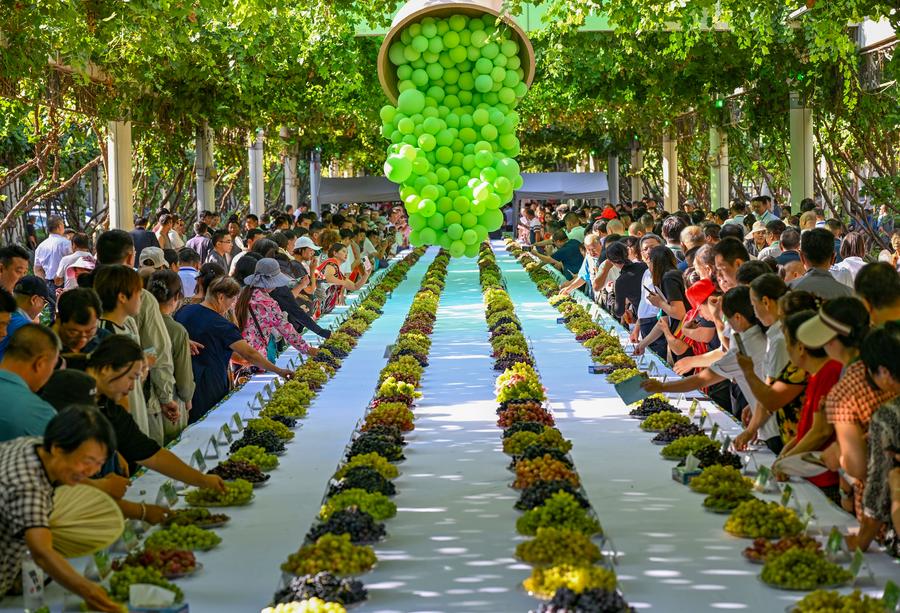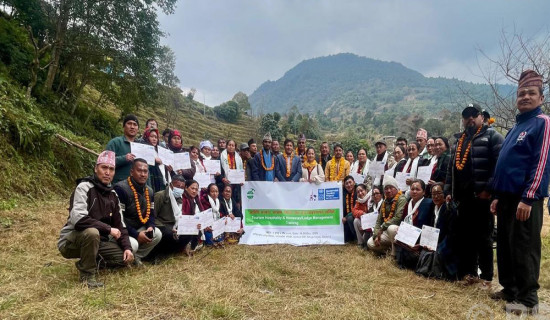- Sunday, 21 December 2025
Xinjiang city wows tourists with delicious grapes, rich culture
URUMQI, Aug. 23 (Xinhua) -- During his week-long exploration of northwest China's Xinjiang Uygur Autonomous Region, tourist Li Jinzhao not only discovered a bounty of delicious grapes but also found himself immersed in the region's rich culture and history.
"So juicy and sweet!" exclaimed Li after attending the 30th China Silk Road Turpan Grape Festival in the city of Turpan last week, where he sampled several grape varieties.
Turpan's high temperatures, extended sunlight hours, significant temperature swings and plentiful groundwater provide an ideal environment for grape cultivation.
With over 630,000 mu (42,000 hectares) of land dedicated to grape planting, Turpan boasts more than 550 grape varieties, making grapes a celebrated symbol of the city, said Tong Zhenrong, an official of the city's forestry and grassland bureau.
While Turpan's grapes are a major draw, the city is also renowned for its other cultural treasures. Among these is the Karez irrigation system, which Li also explored with enthusiasm.
In Turpan, often dubbed China's "land of fire," water is particularly valuable. Despite the city's dry weather, it remains fertile thanks to the Karez system, which has been in use for over 2,000 years.
A Karez well consists of a vertical shaft connected to underground channels that surface in the form of ditches and small ponds. Water from melted ice and snow in Xinjiang's Tianshan Mountains feeds these channels, while the underground structure of the wells effectively prevents evaporation.
"I was amazed by this ancient system," Li remarked. "Not only does it contribute to the production of some of the world's sweetest grapes, but it also showcases the ingenuity and resilience of the people who have thrived in this arid land."
"Turpan is where history, culture and nature converge in a unique tapestry. I definitely recommend the city to my friends," he said.
In recent years, Turpan has leveraged its booming grape industry to develop cultural tourism, attracting visitors worldwide through events including winery tours and grape festivals, which highlight the city's rich history and culture.
Turpan is a pivotal city within the core area of the Silk Road Economic Belt. Among vast vineyards lie the ruins of Jiaohe and Gaochang, ancient cities that once thrived as important stops on the Silk Road.
"We initiated night tours to offer visitors a more immersive experience, enabling them to fully enjoy the local delicacies, music and dance," said Nurmamat Ahmat, a guide at the Jiaohe Ruins.
"Walking among these ruins, one can almost hear the echoes of merchants, travelers and scholars who once passed through, trading goods and ideas between the East and West," he added, expressing hope that more people will explore Turpan's history.
In 2023, Turpan attracted approximately 26.3 million tourists, up 131.97 percent year on year, generating nearly 20.3 billion yuan (about 2.84 billion U.S. dollars) in tourism revenue. In the first seven months of this year alone, the city welcomed over 18 million tourists, a 19.3 percent increase year on year.
Delighted to see the increasing number of tourists, Nurmamat Ahmat said, "Welcome to Turpan, where you can savor our grapes and experience the charm of the ancient Silk Road culture."



-original-thumb.jpg)


-(1)-original-thumb.jpg)








